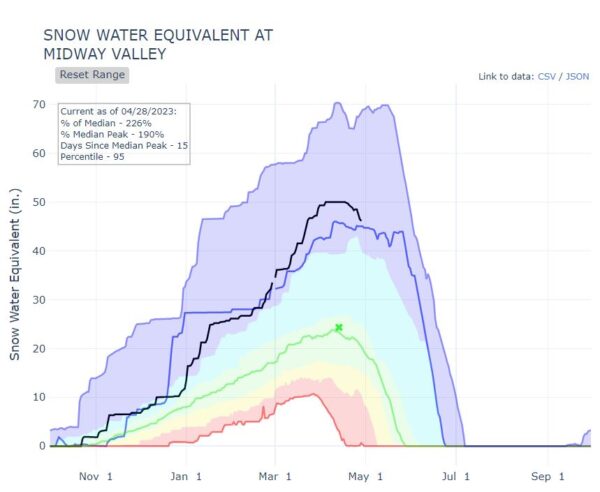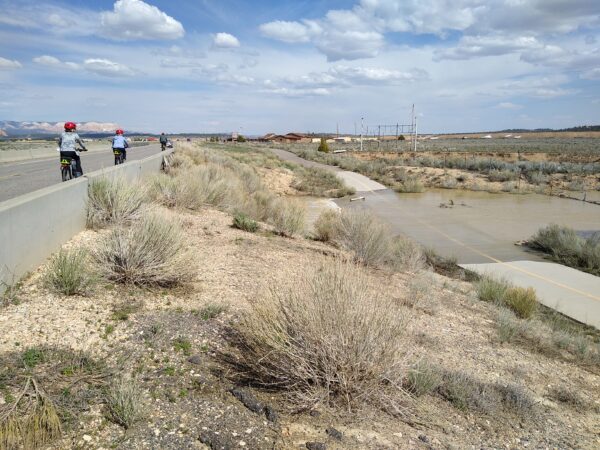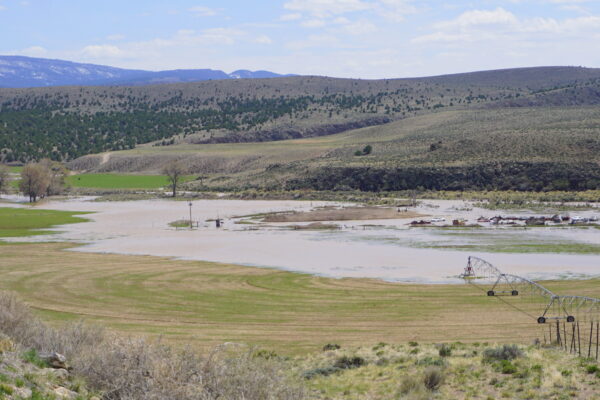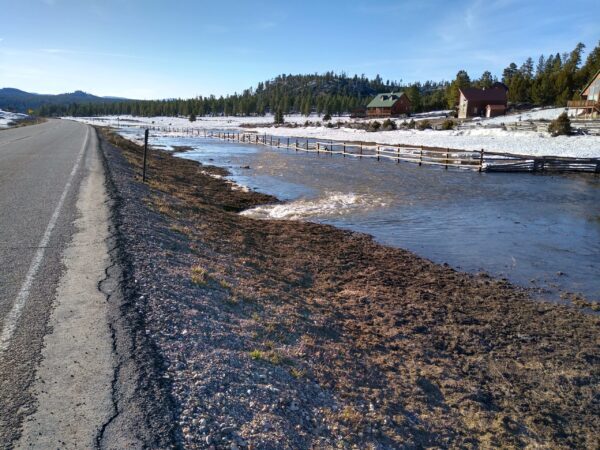Spring is finally here.
After a late winter with temperatures often running eight to 10 degrees below climate during March, residents along the Byway have finally seen some reprieve. Most of the stormy weather ended in early April, and the thaw begins.
During March, valley locations saw flooding especially in the Panguitch area as snowy fields melted with nowhere for the water to drain to. Now the mountains are starting to produce their first runoff.
Already, reservoirs along the Sevier are in good shape considering the ongoing drought. At the start of May, Otter Creek Reservoir was at 65% of capacity, and Piute Reservoir was at 70% with over 1,600 cfs of inflow at Kingston. That’s over 10 times the average flow rate for this season.
There is still more to come. SNOTEL stations at the Fremont River headwaters show that while snowpack is decreasing at lower elevations and southern exposures, northern slopes between Fish Lake and Farnsworth Lake are just now coming off their peak water content.

At the Sevier River headwaters, the Midway Valley SNOTEL peaked at a whopping 50 inches of water content in April (compared to the average peak of 24 inches), and only about 10 of those inches have melted so far. Depending on how quickly the season warms, the Sevier River at Hatch could mirror the 2011 runoff when the river discharged almost 1,400 cfs in mid-June of that year. We have already matched it.
Lake Powell is only 23% of capacity at an elevation of 3525 at the beginning of May, and spring runoff has not yet started in earnest. In April the Bureau of Reclamation, which manages Glen Canyon Dam, estimated that this year’s spring runoff will cause the lake to rise 65 feet. That will put the lake level high enough to reopen Bullfrog’s main launch ramp. Over the last couple years boat launching has been restricted to a new ramp at the north end of the marina.
Many have prayed for a good water year. If you are a person of faith, this is your chance to offer a prayer of gratitude. One “thank you” is worth much more than one “please!”
– The Byway


Feature image caption: Spring runoff clogs the meadows and spills through culverts under Highway 14 four miles east of Long Valley Junction on April 26.

